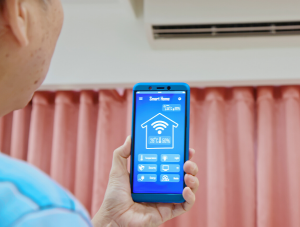 Welcome back! We wrap up our series today with the third “S” plaguing your HVAC customers, shortage of skilled HVAC labor.
Welcome back! We wrap up our series today with the third “S” plaguing your HVAC customers, shortage of skilled HVAC labor.
There are a number of reasons for the labor shortage – from social causes to rapid growth in new products and techniques including smart HVAC systems and sustainable solutions. Understanding your customers’ labor challenges, and their impact, will put you in a better position to help them overcome the shortage — ultimately driving long-term customer trust, retention and revenue growth for your own business.
HVAC Labor Shortage: What the Statistics Say
Growth in the HVAC sector has been explosive. HVAC businesses are scrambling to keep up with service calls, scheduling, ordering parts and putting out fires. Demand is high. But there’s very little time/resources for hiring or training technicians. And the labor pool is shrinking.
The U.S. Bureau of Labor Statistics (BLS) recently estimated:
- An HVAC technician shortage of around 70,000
- The need for 115,000 new HVACR professionals to meet demand within the next 4 years
- Jobs in the HVAC sector will rise 15% by 2026, possibly to address new trends and products, as well as overall growth in market opportunity
Why are They Short-Handed?
Well, there are several obvious reasons for the HVAC labor shortage:
- Retiring Baby Boomers – Not enough young people pursuing trades to replace aging-out technicians and installers, especially in refrigeration
- Image – A social stigma around these jobs and (possibly) over-emphasis on getting a 4-year university degree
- Future growth in the HVAC market – Some stats to note:
- The global projected market size for HVAC is $208.6 billion
- The demand for HVAC equipment across the U.S. in 2019 increased to 6.8% with sales amount of $20.4 billion
- In Europe, the HVAC market is expected to grow at a CAGR of over 6% during the period 2019 to 2025
Some Less-Obvious Reasons
 The shortage could also be a result of management being less available. HVAC leaders are having to spend more time and resources on net-new HVAC trends that weren’t there just a short time ago. Some of these include:
The shortage could also be a result of management being less available. HVAC leaders are having to spend more time and resources on net-new HVAC trends that weren’t there just a short time ago. Some of these include:
- COVID-19 – Your customers have been heads-down figuring out how to transition from office to remote work and comply with greater safety precautions for in-home technicians.
- Demand for Smart HVAC (Internet of Things, or IoT) – They’re having to train staff on new, high-demand smart HVAC products. (Guess how many smart devices will be in place by the end of 2020? A whopping 25 billion!)
- Demand for “Green” – They’re also having to training on new carbon footprint-reducing products and services, such as Geothermal HVAC, DeVAP (Desiccant Enhanced Evaporative) and Solar HVAC systems.
- Personalization Preferences – Finally, they’re investing much time learning how to cater their processes to new preferences for personal touch – 78% of younger consumers expect customer service reps to know their purchase history and contact information as soon as they start speaking to one another. In addition, 45% of workers say they prefer text communication over email.
Making these shifts takes time and resources your customers don’t have.
Better Demand Forecasting is the Key
So what can you do about it? Pay it forward.
It’s super likely that your customers are struggling from a cash problem. They need to hire and train new/existing staff; but with costs on the rise and time slim, their hands are tied.
Perhaps the answer lies in reducing your own costs to free up cash, and then passing those savings down to your customers… Better forecasting is the best way to do this.
Demand forecasting software built specifically for HVAC distributors reduces inventory 10% to 20% on average. These solutions analyze and translate the intricacies of your HVAC customers into an accurate plan that empowers you to respond to their volatile needs with less safety stock — increasing margins, while driving organic customer loyalty and top-line revenue growth.
An Example
We recently wrapped up an HVAC software implementation with a full-service wholesale distributor of heating and air-conditioning equipment and accessories.
After their ERP system outgrew rapid growth and complexities of the business, the company decided to implement Blue Ridge demand forecasting software. In just a few months, they were able to:
- Improve forecast accuracy for seasonal HVAC demand with far less safety stock
- Reduce inter-store transfers by 30-40%
- Improve economic buying power
- Generate consistent, positive customer experiences
Request a copy of the full case study here.
It’s a Wrap, Then.
I hope this series gave you some good ideas on how to help your HVAC customers navigate the 3 “S’s” – stiff competition, seasonality and shortage of skilled labor. If you enjoyed it, why not go back and share it?
Learn more about Blue Ridge HVAC distribution software:















